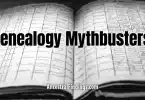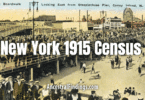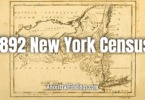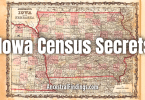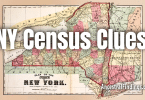The 1905 New York State census is a cornerstone resource for anyone researching individuals or families who lived in New York at the beginning of the 20th century. Coming just five years after the 1900 federal census and five years before the 1910 federal count, this state census captures a critical snapshot of life during a dynamic and rapidly changing time in American history.
Why the 1905 Census Matters
This period saw tremendous population growth in New York. Immigration was surging, especially from southern and eastern Europe. Industrialization and urbanization were transforming cities and towns, and people were on the move, seeking better jobs and housing. Between 1900 and 1910, New York City alone gained more than a million residents. The 1905 census helps us capture families during this moment of flux, especially in areas like New York City, Buffalo, Rochester, Syracuse, and Albany.
For family history researchers, this census offers the chance to:
- Identify household members and their occupations
- Observe changes in family structure between 1900 and 1910
- Track newly arrived immigrants and early assimilation patterns
- Learn about the layout of neighborhoods and communities before widespread suburban expansion
What Information Was Collected
Unlike earlier state enumerations, the 1905 census collected more detailed information. It includes:
- Full name of each individual
- Age
- Sex
- Color or race
- Relationship to the head of household
- Country or state of birth
- Citizenship status (for foreign-born individuals)
- Occupation
- Whether the person could read or write
- Years of residence in the United States and in New York State
In urban areas, particularly tenement neighborhoods in New York City, you may find long lists of individuals at a single address, often reflecting large immigrant communities or multi-family dwellings. This gives insight into both economic conditions and cultural ties.
A Unique Bridge Between Federal Censuses
While it doesn’t ask about year of immigration or language spoken (as the 1910 federal census would), the 1905 state census stands out for listing citizenship status and years in the U.S. and New York, which helps track the assimilation and migration timeline of immigrants. In this way, it provides a unique bridge between federal enumerations, adding valuable details that might otherwise be missing.
Let’s say a Russian-born ancestor appears in the 1900 federal census but not in the 1910 enumeration. The 1905 state census might confirm their presence in New York during those intervening years, provide a more accurate age, and offer clues to help locate naturalization records or death certificates.
Where to Find the 1905 New York Census
You can access the 1905 New York State census records through several key repositories:
- FamilySearch.org: Free access to digitized images, with partial indexing
- Ancestry.com: Full indexing and linked images, searchable by name and location
- New York State Archives: Original microfilm copies for on-site research or interlibrary loan
- Local libraries and historical societies: Especially in counties that retained separate copies or created transcripts
Many of these platforms also allow image browsing, which is useful if you know a family’s location but not how the surname might have been recorded or misspelled. City directories are helpful companion resources for narrowing down streets or neighborhoods.
Using the 1905 Census in Your Research
This census is especially helpful when building timelines. Suppose you have a couple who appear in the 1900 census as newlyweds with no children. In 1905, they might show up with two children, a boarder, and a different occupation listed. By 1910, they might have moved, changed careers, or even left the state. That five-year snapshot gives you more context for understanding the rhythm of their lives.
The relationship column is also essential. You can track not only nuclear families but also extended relatives living together, such as a sister-in-law or older parent. This can help identify maiden names, reveal secondary marriages, or confirm family stories about who lived in the household. For example, a relative listed as a “lodger” might later turn out to be a brother-in-law based on surname, age, and place of birth.
If you’re studying immigrant groups, the 1905 census is invaluable. It often shows entire communities living on the same block—Polish, Russian, Irish, Italian, German, and Jewish immigrants clustered in neighborhoods, working similar jobs, and forming early support networks. In many cases, you’ll see multiple households with the same surname in close proximity, hinting at family connections or village-based chain migration patterns.
Broader Context: What Was Happening in 1905?
New York in 1905 was bustling. The subway had just opened the year before in Manhattan. New waves of immigrants were arriving through Ellis Island every day. Labor unions were on the rise, tenement reform was gaining steam, and Tammany Hall still held political power. Understanding this social backdrop helps researchers better interpret the living and working conditions listed in the census.
For example, if an ancestor worked as a “machine operator,” it’s worth investigating what kind of factories were prominent in that area at the time—clothing, printing, or metal goods. The census gives you just enough of a clue to start building a more detailed story.
Common Challenges and Tips
As with any handwritten historical document, the 1905 census comes with some challenges:
- Spelling errors and handwriting inconsistencies
- Damaged or faded microfilm
- Misindexed names, especially for foreign-born individuals
Always double-check variant spellings, and if an indexed search fails, browse by district or address. City directories can help narrow the street and ward where a family lived, making browsing much easier. Try different search strategies and use neighboring entries to help confirm identities.
Conclusion: A Vital Tool for the Early 20th Century
The 1905 New York State census may not be as widely known or used as federal records, but for researchers working in this era, it provides continuity. It captures a moment of growth and transition in New York’s communities and helps illustrate daily life during a time of rapid change.
Whether you’re filling in a timeline, discovering new relatives, or simply seeking more detail about your New York ancestors, the 1905 state census deserves a place in your research toolkit. When combined with other local records—like birth, marriage, death, and city directories—it offers a much clearer view of life in one of America’s most pivotal states at a critical point in its development.

